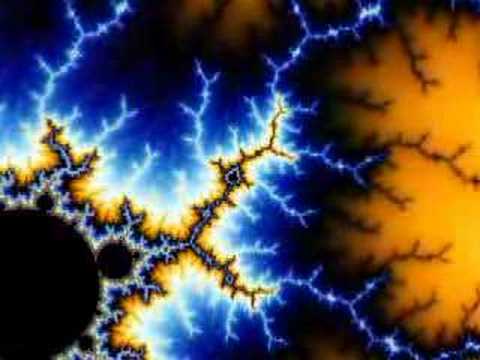What you’re watching isn’t organic, but a computer-generated visualisation of complex mathematics. It’s a three-dimensional fractal.
The clip is a new music video for the song “Eternal Recurrence” by electronic music group Birds of Paradise, created by Dutch fractal artist Julius Horsthuis. Producing the visuals to accompany the soundscape required rendering mathematical formulas in the Mandelbulb3D software.
“A combination of the formulas gives rise to these complex and alien landscapes,” Horsthuis told Gizmodo.
Enter the world of fractals, difficult-to-measure shapes that contain some sort of structure, regardless of how much you zoom in. You may see a roughly zig-zag shape, but when you zoom in, you realise those zig-zags are made of hundreds of smaller zig-zags, which are themselves made of even tinier ones — and so on and so on forever.
One mathematician, Benoit Mandelbrot, is responsible for devising perhaps the most popular fractal, the Mandelbrot set. This is really just a list of all the complex numbers (ones of the form a+bi where i is equal to the square root of -1, and a and b are just any other number, positive or negative, even zero) that solve his special and surprisingly simple equation. Basically, you take your number, square it, then add your number to the square, then square that, then add your number to that, continuing on forever. If final number is finite, then the first number is part of the Mandelbrot set.
Things start looking cool if you plot those sets on the real-imaginary plane. Numbers included in the Mandelbrot set are black, and numbers outside of the set get coloured in depending on how quickly they go to infinity. Out pops those mind-bending images, like this one below, with their incredibly complex boundaries and the reappearance of the general Mandelbrot shape.
Paul Nylander and Daniel White teamed up to create Mandelbulb3D, a three-dimensional version of the Mandelbrot set, as reported by New Scientist back in 2009. The software renders shapes that maintain this self-similar fractal zooming behaviour by solving more advanced equations.
Horsthuis doesn’t draw his art — he starts with the formulas and explores the universe created by the Mandelbulb fractal, zooming in, out, and around to find parts he thinks are interesting. Then he renders them, adding colour and lighting. “It’s more like what a nature photographer would do. You explore different things and if you see something you really like, you start rendering, like taking a picture or a video.” He rendered spots that looked like an underwater world, followed by an alien-looking landscape. Each frame of these videos can take a half hour to render.
So just sit back, soak up the tunes, and let yourself be taken in by the mind-blowing maths.
